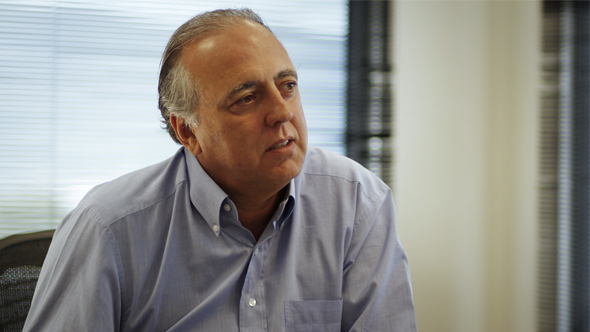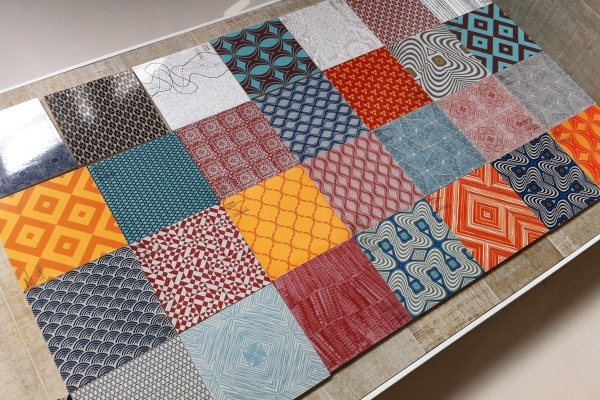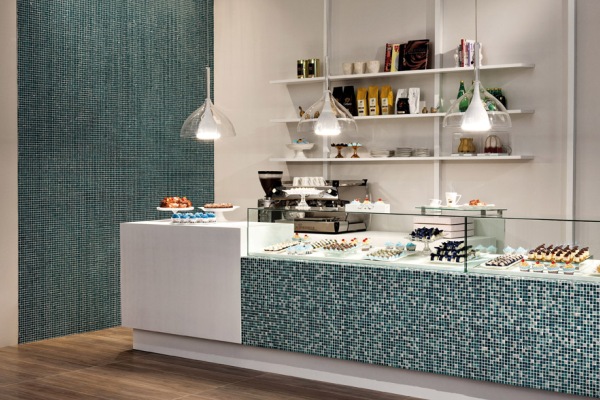Portobello: Brazilian Ceramic Tile Manufacturing Company
Cesar Gomes Junior, President of Portobello
Cesar Gomes Junior gives an overview of the industry in Santa Catarina and Brazil. He also presents Portobello, the leading ceramic tile manufacturer in Brazil, discussing performance, internationalization and future plans for the company.
Interview with Cesar Gomes Junior, President of Portobello

Let’s talk first about Santa Catarina and about Brazil. What is your view of the global economy at the moment? How do you think Brazil is doing and how will it develop in the next two years?
Portobello is a leader both in exports and imports. It is the largest producer but it also outsources. There is great competitiveness in our sector, mainly because of its scale – Brazil is the second largest producer of ceramic tile in the world and the second largest consumer.
Well, I´m actually very confident about Brazil’s prospects. Brazil is a country with great opportunities, as well as great challenges. There is no question we are going through a good moment and we should see some growth in the Brazilian economy in the next 3 to 4 years.
What about the Brazilian industry?
The Brazilian industry is also going through a period of adjustment. But as the Brazilian economy stabilizes, our economical context is becoming more favorable, with more competitive interest rates. Industry is going through a period of renewal – and it definitely needs to renew itself; it needs to gain international competitiveness. We are faced with a significant challenge in terms of productivity. Brazil is currently losing competitiveness, when compared to the main international players, but I think we can revert this situation quickly.
How does Santa Catarina suit into this context?
Santa Catarina is unquestionably in a good position; it is a State that sets itself apart in Brazil, due to the quality of its workforce and of its people. It is a State with a good economic distribution, in terms of industry, agriculture, and also geographically, in terms of regions. So it’s a very competitive State, with a great vocation for quality and for exportation. It has always been better suited for a global context than the rest of Brazil. So, in this moment of greater internationalization and globalization, there is no doubt about its competitiveness. It is, of course, faced with a few challenges, again in terms of productivity, and also in terms of training and qualification of the workforce – those are unquestionably the great challenges for Brazil, for Santa Catarina and for our industry.
In this context, Portobello is a company that can be taken as an example. It seems to be doing well both in Brazil and internationally. Can you tell us a bit about Portobello?
Portobello is unquestionably Brazil’s leader in its sector. But this is a sector that is badly fragmented, not just in Brazil but also internationally; therefore, globalization is a strategy that requires all sorts of partnerships. Consequently, Portobello is a leader both in exports and imports. It is the largest producer but it also outsources. Working in such a fragmented sector like the one we are in, we have to play many roles, and always within a global perspective. There is great competitiveness in our sector, mainly because of its scale – Brazil is the second largest producer of ceramic tile in the world and the second largest consumer. So Brazil is an important player in the international setting. And Santa Catarina is one of the leading States in Brazil, where there are two main production centers: Santa Catarina and São Paulo. Santa Catarina has a stronger tradition, produces better quality, and has a higher export rate, but these are the two main centers in Brazil.

Can you tell us a little bit more about the way Portobello has these two simultaneous roles?
There is no question that, nowadays, in this globalized world we no longer have closed economies. The fact that we have the Brazilian market as our main focus is no reason why we can’t have an important participation in exportation. Exportation unquestionably breathes new life into the company and into the sector, in terms of technology and in every other aspect. On the other hand there are many new important players, like the European and especially the Chinese, who are now entering the sector with a very competitive dimension and, consequently, competitive production costs. So we bring in products from Italy and from China to complement our own products, and at the same time, we export to Italy and China. So there is sort of an exchange, in which you focus on what you are more competitive, but at the same time you complement your product line with competitive third party products.
So, where does Portobello stand out? Is it in marketing, in production, in exports?
Well, the aspects that set Portobello apart are its knowledge of the market, its brand, its distribution channels, and its share in the internal market. To operate in this market we have a franchise network. We have 120 stores in Brazil, which specialize in the distribution of ceramic tile cladding. To supply this market we have our own production and we outsource from Brazil, China, France, Spain, etc. So there is an attempt to separate the industry side from the commercial side. We want to provide good products for this market, investing in design and in high end products, which may either be produced by ourselves or by a third party.
How do you differentiate yourselves regarding production?
Well, nowadays, technology is widely globalized. It is no longer exclusive property of the manufacturer. It is shared by the manufacturer, by the equipment supplier, by the raw material supplier, etc., so the differentiator factor is not in the industry or in the technology. Differentiation is in the understanding of the market, it is in choosing the adequate design for that market, it is in getting the right distribution channels and associating the services that are better suited. So the key is more and more this understanding of the market, and not as much the industrial aspect.
Besides the Brazilian market, do you operate in others?
Yes, our focus is in the Americas. From Canada to Argentina. Our primary market is Brazil, and our main focus for exports is the Americas. We have exported for more than 80 countries. Historically, we have exported to Japan, China and other Asian countries. Currently we have removed our focus from Asian countries, mainly due to the fact that they are now becoming our competitors. They are beginning to have their own context, their own competitiveness and their own productivity. So we are naturally turning our focus back to the Americas, with which we have a much greater affinity. It is not just a matter of distance; it is a matter of culture, it is a matter of product type, of distribution, of services, etc. It has become very clear that what we did in the Brazilian market needs to be done for the American market as well. We benefit from a lot more synergies and more differentiating factors when operating in the American market than we do in the Asian.

What is Portobello’s primary goal at the moment? To penetrate more American distribution networks, to increase distribution in your current market, what is currently your main focus?
Well, Portobello has had a growth of 20% per year and, in the next five years, we are planning to have a growth rate of 30% per year. So you can see this is quite a solid growth. Part of it comes from our own production but another part comes from third party products. So this exploring of the market is crucial for us. We intend to have this growth rate both in the internal market and the external market – the Americas. Even though 80 percent of our sales volume comes from the Brazilian market, which is still a very promising and growing one. The prospects for the Brazilian construction industry for the next 4 to 5 years are very good. So that would be our main focus at the moment.
Within this strategy, are you planning to focus more on end consumers or construction companies, supply channels, etc.?
Well we operate in retail as much as we operate in the construction industry. We have 2 different sales teams for different products and for different markets. In the retail market we have our own stores with specialized service by a qualified team, which includes architects, specifiers, etc. We offer a series of specialized services around the products in order to address all the needs of the end consumer. We take care of logistics, designing, application of the products, etc. Regarding the construction market, we target mostly big engineering companies.
The Brazilian construction market is going through a serious process of industrialization and professionalization. Companies are gaining dimension, and nowadays we have solid, publicly traded companies. We are moving towards a reality in which construction is more standardized, more industrialized and working at a greater scale. Of course the needs and requirements of this market are quite different from those of the retail market. But we try to operate in both markets in such a way that they complement each other.
So what are Portobello’s main challenges regarding this context?
The biggest challenges for Portobello will undoubtedly be the strong growth in Brazil, in terms of regions, namely the Northeast. We have a solid investment project for the Northeast, as it is the region most likely to grow above Brazil’s average – especially the seaside, due to the blooming tourism and the way the Northeast is discovering its true identity. The Northeastern economy is clearly experiencing a strong growth. Consequently, it will require more important local investments. We are involved in this process – there is a tendency for consolidation in the sector and we will be one of the key players in achieving it. We have been studying some interesting alternatives that are in harmony with this goal of consolidation, although opportunities such as these are occasional, which makes it difficult to prepare and plan for them beforehand.
As I have mentioned, we are currently boasting a good growth rate, we are planning to grow at a rate of about 30% per year, including our own production, third party products, and our own stores, which amounts to a rather significant growth – simultaneously we will also have these opportunities for consolidation.
Will this consolidation involve foreign companies, or is it all done within the Brazilian market?
This consolidation can be done both with Brazilian and foreign business. We have some consolidation opportunities with foreign companies, but as I have mentioned, this is a sector that is badly fragmented, not only in the Brazilian context, but also internationally. So we see this consolidation process happening throughout the world, be it in Europe, Africa or even Asia. We are already one of the major international players, so there is a strong chance that we will achieve some international consolidation. The Brazilian market is currently one of the most attractive for international business, so all the key players are constantly looking into it. Europe seems to be stagnant, with no real growth; the United States seem to be slowly reverting their situation, only beginning to show a small growth; none of them seems to have the same rhythm as emerging economies like Brazil. We are having a much stronger growth and the big opportunities are definitely in markets like ours. So it is only natural that we see these players come to Brazil. The internationalization of the Brazilian market is becoming a reality, it is a context that is growing, which I believe to be very positive for all.
Will Portobello be willing to work in a consolidation with a foreign company?
Our priority is unquestionably to invest in the Brazilian market. But we have been looking into some opportunities in South and North America. If there are consolidation opportunities in these markets, we will of course explore the possibilities, and they would actually make a lot of sense, as they are in harmony with our strategy to establish ourselves in these markets.
Where does Portobello stand out among its competitors?
Portobello’s main differentiator is unquestionably its market positioning – its brand its products, its design – and, most of all, a great articulation with architects and specifiers. So the market is actually our main differentiator. Our factories have the latest technology, but that is not a factor for competitiveness. What sets us apart is unquestionably the product, the brand, the service, the distribution, the market itself.

What are your plans on a medium term basis? Ideally, where would you like to see Portobello in the next 2 to 3 years?
Well, we imagine that we will continue to increase our market share in Brazil and, most of all, continue to grow in terms of distribution. We will be doubling our number of stores and increasing their size. Our greatest investment will not be in terms of industry, even though we are planning to increase our industrial production. Our greatest investment will still be in marketing and sales. That will be our great priority. This marketing will include a strong relationship with architects. Above all, we want to be a company that is always driven by innovation. Our sector has a great component of architecture, of design, of fashion. And we have to master this capability of leading that innovation in this market. That is where we have been successful so far and it remains our challenge to stay in this position of leadership.
What would be your final message for any Brazilian or foreign potential investors?
My message is that I am certain we are going through a very good moment in Brazil. Our growth is not exactly a “boom” but we are growing at a consistent rate of 4% per year, which is pretty significant. We should be seeing civil construction growing at a higher rate than the Brazilian GDP, so construction should be one of the sectors that will carry the Brazilian economy. Especially because Brazil has a great housing deficit and also a great infrastructure deficit. The construction sector will have opportunities in both these areas, and will surely leverage the Brazilian growth.
We should see Brazil’s economy stabilizing, with more competitive interest rates and long term financing – it is important to remember that up until recently, the reality in Brazilian civil construction was that you could only get financing for real estate of 12 or 24 month – 36 months was long term. Currently, the situation has turned into a context where we have financing up to 25, 30 years. When you consider the significantly lower interest rates, and these deadlines in financing, you can imagine the size and the potential of such a market. I believe our growth will be quite consistent.
Nowadays, construction is no longer dependent on government funding or state banks – instead, it is being financed by private banks and enterprises, with the most creative and ingenious solutions created by modern financial engineering. So it is a very different and positive scenario. I think it’s also worth noting that in Brazil, just a few years ago, there was still a high level of informality. This informality is coming to an end and giving way to an increasingly more formal economy. This may be due to the fact that we are headed towards an increasingly structured economy, in financial terms. The development of IT, control mechanisms and internationalization are also moving at a good speed. We now see companies gaining dimension, capital markets blooming, and a country with an increasingly structured and formal economy. We are paving the way and creating opportunities for international companies, either Brazilian or foreign, to invest and to grow. And of course Portobello finds itself in a very comfortable position within this context. We are quite sure of our potential and we are very confident about our future.